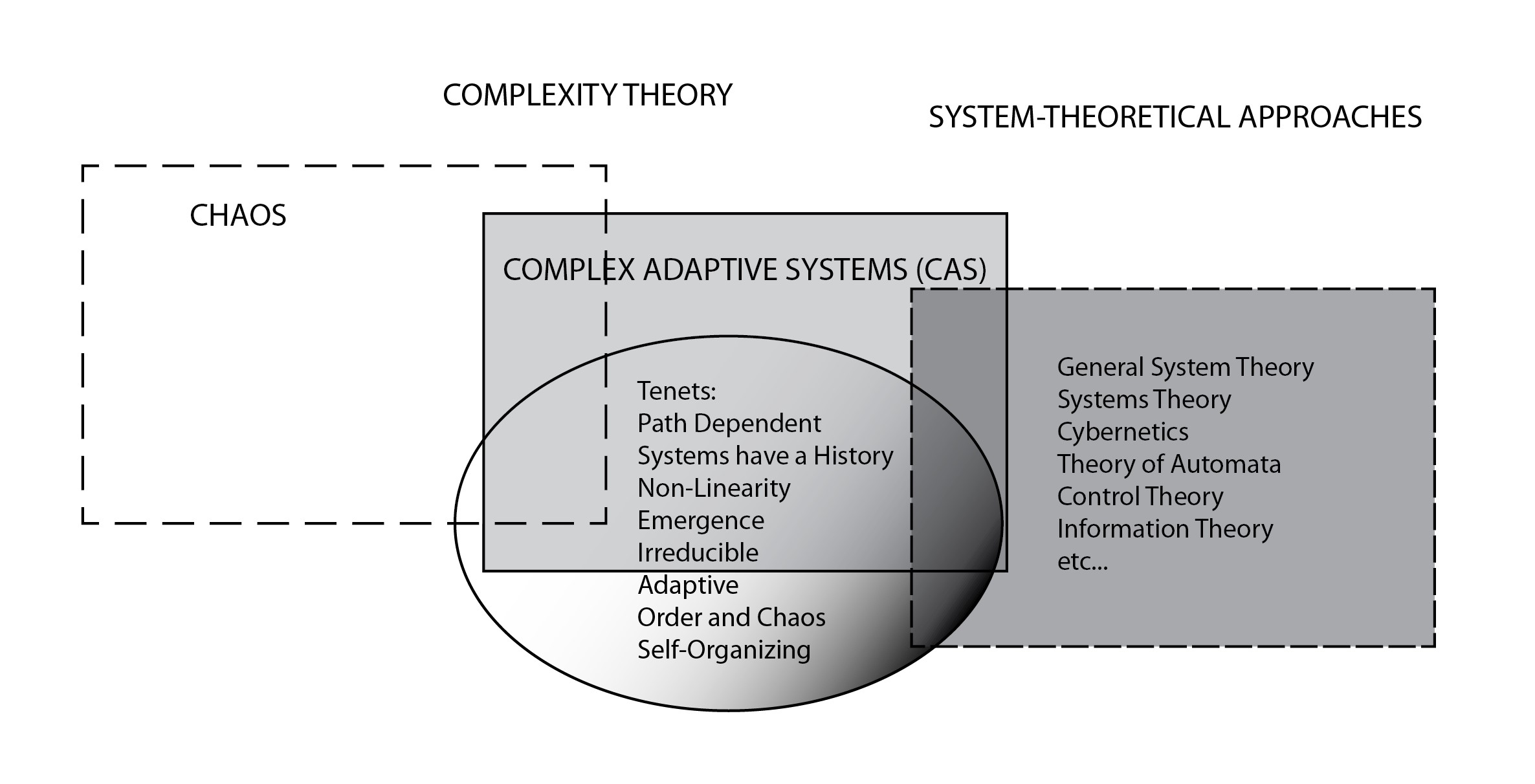Complexity In Evolution
Have you ever wondered how the complex systems in our world, from the human body to the rainforest, came to be? The answer lies in the intricate process of evolution, which drives the development of increasingly complex organisms and ecosystems.
One of the key challenges in understanding evolution is its complexity. The interactions between different species, the environment, and genetic factors create a web of complexity that can be difficult to unravel.
Complexity In Evolution, also known as the Complexity-First Principle, proposes that biological complexity is not merely a result of random mutations and natural selection. It suggests that there are inherent mechanisms or principles that drive the development of complex systems.

Systems | Free Full-Text | Complexity Theory: An Overview with – Source www.mdpi.com
At its core, Complexity In Evolution emphasizes the interdependence and interconnectedness of different parts of a system. It suggests that the emergence of complexity is a consequence of interactions and feedback loops between components, rather than a gradual accumulation of simpler traits.
Complexity In Evolution: Unveiling Nature’s Intricacies
In the realm of biology, complexity takes on many forms, from the intricate DNA molecules within cells to the diverse ecosystems that span our planet. Understanding Complexity In Evolution allows us to delve deeper into the mechanisms that have shaped these complex systems. By examining the interplay between genes, the environment, and developmental processes, we can uncover the hidden secrets of nature’s designs.
One of the key insights from Complexity In Evolution is the recognition of emergent properties. These are new characteristics that arise from the interactions between components, not present in the individual elements themselves. It is through these emergent properties that complex systems exhibit unique behaviors and capabilities.

The Engine of Complexity (eBook) | Science books, Sound science – Source www.pinterest.com
Complexity In Evolution: Tracing Its History and Myths
The concept of Complexity In Evolution has its roots in various fields, including biology, physics, and computer science. However, it was first popularized in the 1990s by scientists such as Stuart Kauffman and John Maynard Smith. Their work challenged the prevailing notion that complexity is solely the result of natural selection acting on random variations.
Over the years, Complexity In Evolution has sparked both excitement and skepticism. Some have hailed it as a revolutionary paradigm, while others have questioned its explanatory power. Despite the debates, the growing body of research in this area continues to shed light on the intricacies of biological complexity.

The Evolution of IT Complexity | Opsview – Source www.opsview.com
Complexity In Evolution: Unveiling the Hidden Secrets
One of the most intriguing aspects of Complexity In Evolution is its potential to reveal hidden patterns and principles. By studying the dynamics of complex systems, scientists are uncovering commonalities that transcend individual species or ecosystems. These principles may provide insights into the fundamental forces that shape the evolution and organization of life.
For instance, the concept of self-organization, where order emerges spontaneously from chaos, has been observed in various biological systems. From the formation of intricate patterns on animal skin to the collective behavior of social insects, self-organization highlights the inherent tendency of systems to evolve towards higher levels of complexity.

Neuron counts reveal brain complexity evolution in land vertebrates – Source phys.org
Complexity In Evolution: Recommendations for Further Exploration
If you are intrigued by Complexity In Evolution, there are a wealth of resources available to deepen your understanding.
Books such as “Complexity in Evolution: What Life Tells Us About Evolution” by Jason Brown and “The Complexity of Life: A Mathematical Approach” by John Maynard Smith provide comprehensive overviews of the field. For a more technical exploration, consider “The Origins of Order: Self-Organization and Selection in Evolution” by Stuart Kauffman.
Additionally, online platforms like the Complexity Science Hub Vienna and the Santa Fe Institute offer articles, videos, and research updates on Complexity In Evolution and related topics.

Living with complexity: evolution, ecology, viruses and climate change – Source theconversation.com
Complexity In Evolution: A Deeper Dive into the Mechanisms
Complexity In Evolution proposes that biological complexity arises not only through random genetic mutations and natural selection, but also through self-organization and emergent properties.
One mechanism that drives complexity is the process of autocatalysis. This occurs when a molecule or system catalyzes its own production or assembly. For example, the replication of DNA and RNA molecules is an autocatalytic process that ensures the faithful transmission of genetic information.
Another mechanism is known as coevolution. This occurs when two or more species mutually influence each other’s evolution. For instance, the coevolution between flowering plants and their pollinators has led to the development of intricate pollination mechanisms and specialized flower shapes.

67 | Kate Jeffery on Entropy, Complexity, and Evolution – Sean Carroll – Source www.preposterousuniverse.com
Complexity In Evolution: Tips for Understanding the Intricacies
To better grasp the complexities of evolution, consider the following tips:
1. Embrace the Interconnectedness: Recognizing the interconnectedness and interdependence of different elements within a system is crucial. Evolution does not occur in isolation; it is a symphony of interactions.
2. Seek Emergent Properties: Look for patterns and behaviors that arise from the interactions of multiple components. These emergent properties often drive the development of complexity.
3. Explore Self-Organization: Understand the concept of self-organization, where order and structure emerge spontaneously from chaotic or random systems.

Epoch Database – Source epochai.org
Complexity In Evolution: A Closer Look at Self-Organization
Self-organization is a captivating phenomenon that exemplifies how complexity can emerge from simple interactions. In biological systems, self-organization manifests in various forms, driving the development of patterns and structures without external guidance or control.
A classic example of self-organization is the formation of Turing patterns. These are intricate and dynamic patterns that arise from the interaction of two or more chemical substances. In living systems, Turing patterns are found in animal skin patterns, feathers, and other biological structures.

Master Complexity Management In Businesses | eccenca – Source eccenca.com
Complexity In Evolution: Fun Facts and Oddities
The world of Complexity In Evolution is brimming with fascinating facts and oddities:
1. The Cambrian Explosion: One of the most enigmatic periods in evolutionary history, the Cambrian Explosion witnessed a sudden and dramatic increase in the diversity and complexity of life forms around 541 million years ago.
2. Adaptive Landscapes: In Complexity In Evolution, the concept of adaptive landscapes is used to represent the fitness of different genetic combinations. These landscapes are often rugged and complex, with multiple peaks and valleys, highlighting the challenges of navigating the evolutionary path.

Systems | Free Full-Text | Complexity Theory: An Overview with – Source www.mdpi.com
Complexity In Evolution: A Practical Guide for Understanding
To enhance your understanding of Complexity In Evolution, consider the following:
1. Explore Computer Simulations: Computer simulations can provide valuable insights into the dynamics of complex systems. By creating virtual models, scientists can test hypotheses and explore evolutionary scenarios that may be difficult to observe in real-world settings.
2. Attend Conferences and Workshops: Participating in conferences and workshops is an excellent way to engage with the latest research and connect with experts in Complexity In Evolution.

Fossil Evidence & Evolution – poster/activity | Life science lessons – Source www.pinterest.com
Complexity In Evolution: A Deeper Dive into Its Impact
Complexity In Evolution has profound implications for our understanding of biology and the origins of life:
1. The Role of Chance and Order: Complexity In Evolution challenges the notion that evolution is solely driven by random chance. It emphasizes the interplay between order and disorder, highlighting the role of self-organization and emergent properties.
2. The Origin of Life: Complexity In Evolution offers valuable insights into the origins of life. By studying the emergence of complex systems from simple components, scientists gain a better understanding of how the first living organisms may have evolved.
Conclusion of Complexity In Evolution
In the intricate tapestry of life, Complexity In Evolution serves as a guiding principle, illuminating the mechanisms that drive the development of complex systems. By embracing the interconnectedness, seeking emergent properties, and exploring self-organization, we unravel the secrets of nature’s intricate designs. From the tiniest organisms to the vast ecosystems that shape our planet, Complexity In Evolution provides a lens through which we can marvel at the wonders of life’s complexity.
Questions and Answers about Complexity In Evolution
- Q: What is Complexity In Evolution?
A: Complexity In Evolution is a theory that proposes that the complexity of biological systems arises not only through random mutations and natural selection, but also through self-organization and emergent properties.
- Q: What are some examples of complexity in biology?
A: Examples of complexity in biology include the intricate structure of DNA, the diversity of ecosystems, and the complex behaviors of social animals.
- Q: How does Complexity In Evolution differ from traditional theories of evolution?
A: Complexity In Evolution emphasizes the interconnectedness of different parts of a system and the role of self-organization, while traditional theories of evolution focus more on the role of random mutations and natural selection.
- Q: What are the implications of Complexity In Evolution for our understanding of life?
A: Complexity In Evolution suggests that the development of complex biological systems is not solely the result of random chance, but is driven by inherent mechanisms that promote self-organization and the emergence of new properties.



